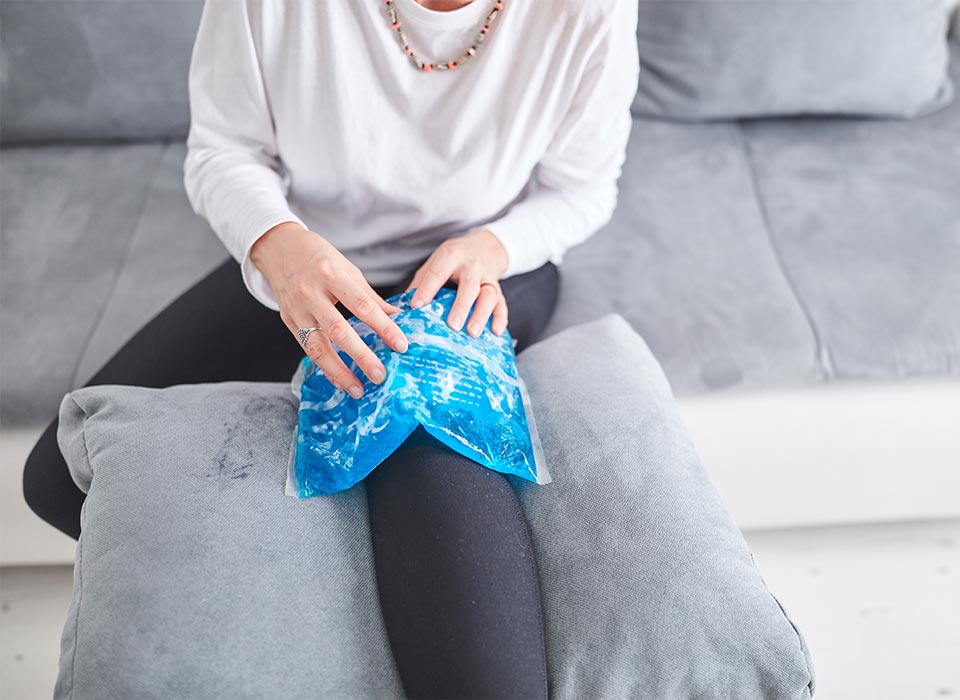Perhaps you’ve just twisted your ankle. Or maybe you suffer from chronic arthritis pain. The in-jury or arthritis site is hurting a little, so you open a drawer to find an ice pack and a heating pad.
Which one do you grab?
Ice and heat therapy are used to treat a multitude of injuries and conditions, with some treatment plans calling for both. In general, however, cold therapy is for acute injuries and pain that involves inflammation or swelling. Heat therapy is for muscle and joint pain or stiffness.
Note: Always follow advice from your healthcare provider. The information given here is meant to be general – if you receive different instructions after surgery, for example, follow those.
Cold therapy
Ice or cold therapy, known as cryotherapy, decreases nerve activity and blood flow at an injury site, helping reduce any inflammation or swelling that may be causing pain.
The pack of frozen peas in your freezer isn’t the only style of cold therapy that can be used in the home. Numerous other types include:
- Ice baths
- Ice or frozen gel packs
- Coolant sprays
There are also more intensive cold therapy techniques that many athletes use for recovery such as cryostretching (using cold during stretching exercises), cryokinetics (using cold treatments during active exercises), and whole-body cryotherapy (sitting in a cryochamber for two to five minutes).
How to use cold therapy
Never apply ice or frozen gel packs directly to the skin. If you are using ice or frozen gel packs at home, wrap them in a towel before placing them on the injury site to avoid skin and tissue damage.
After an injury, cold treatment should be used as soon as possible. Continue applying cold ther-apy several times throughout the day but only for short periods of 10 to 15 minutes. Elevating the injured area while using cold therapy is also beneficial.
How NOT to use cold therapy
If you have sensory disorders or poor circulation, do not use cold therapy. You may not be able to feel if skin or tissue damage is occurring.
Heat therapy
Heat therapy increases blood flow, circulation, and muscle flexibility of an injured area. The in-creased temperature can soothe and relax aching muscles or joints.
Dry heat and moist heat are the two types of heat therapy commonly used. Dry heat techniques involve applying heating pads or dry heating packs. Moist heat techniques include steamed tow-els, moist heating packs, and hot baths.
CAUTION: the temperature of any style of heat therapy should be warm, not hot.
How to use heat therapy
Heat therapy can be applied locally, regionally, or to the whole body.
Local application is primarily for small, specific areas that are causing pain (e.g., right shoulder). A small heat pack is the best option for local treatment.
Regional treatment includes a larger, more generalized area (e.g., the entire left leg). A large, steamed towel or heating pad will work sufficiently.
Whole body treatment is obviously used to relax the entire body. Saunas and warm baths are often utilized.
Unlike cold therapy, heat therapy works best when used for longer periods of time. Fifteen to 20 minutes may be all that is needed for minor stiffness, but sessions may last anywhere from 30 minutes to 2 hours if necessary.
How NOT to use heat therapy
If you notice that the injury site is bruised or swollen, heat therapy may actually worsen the bruising and swelling (use cold therapy instead). If the injury site is an open wound, do not apply heat. Increased temperatures will only further the bleeding and could increase the risk of an in-fection spreading.
With better knowledge on when to open the freezer and when to draw a warm bath, the better your ability to soothe pain and discomfort will be. Again, as a general rule of thumb, remember cold therapy is for acute injuries involving inflammation and swelling, and heat therapy is for muscle stiffness and joint pain.

